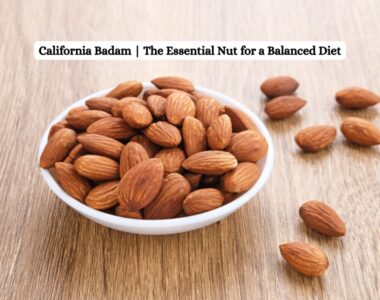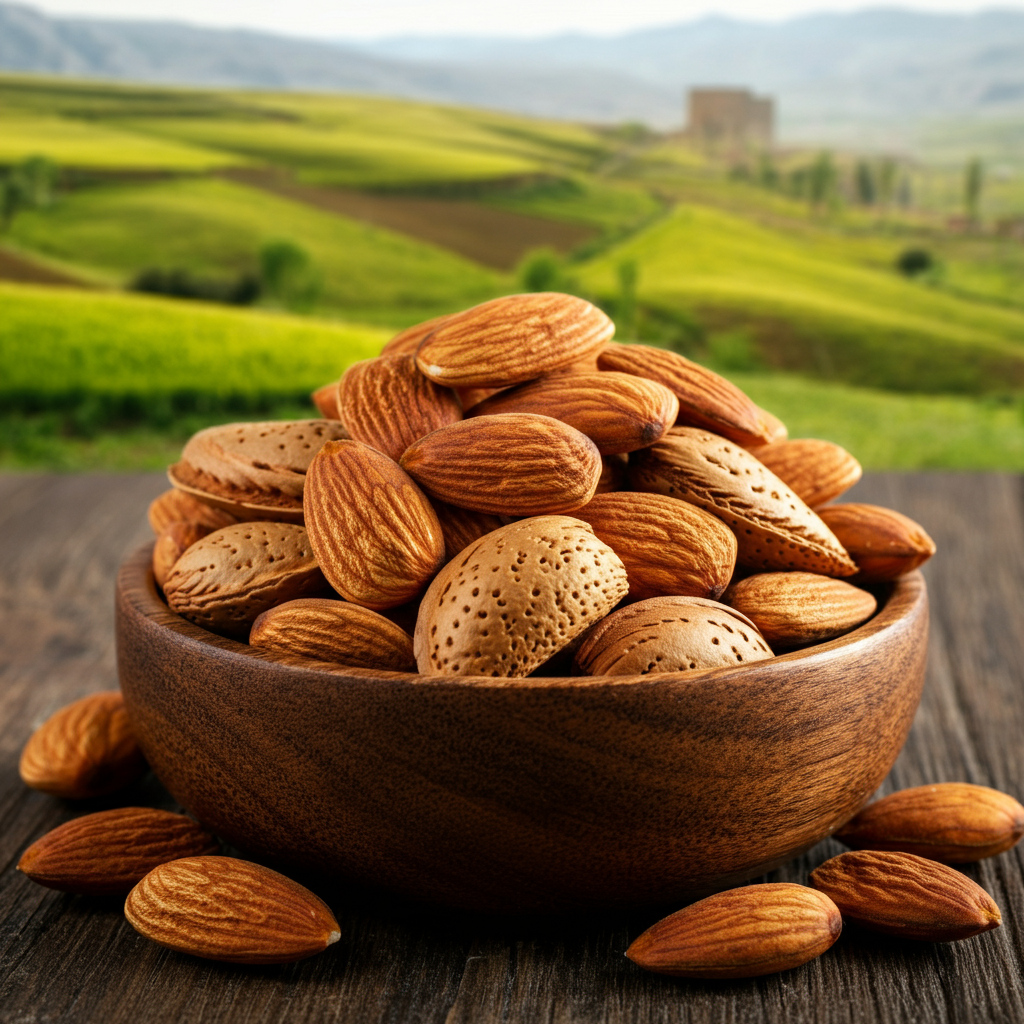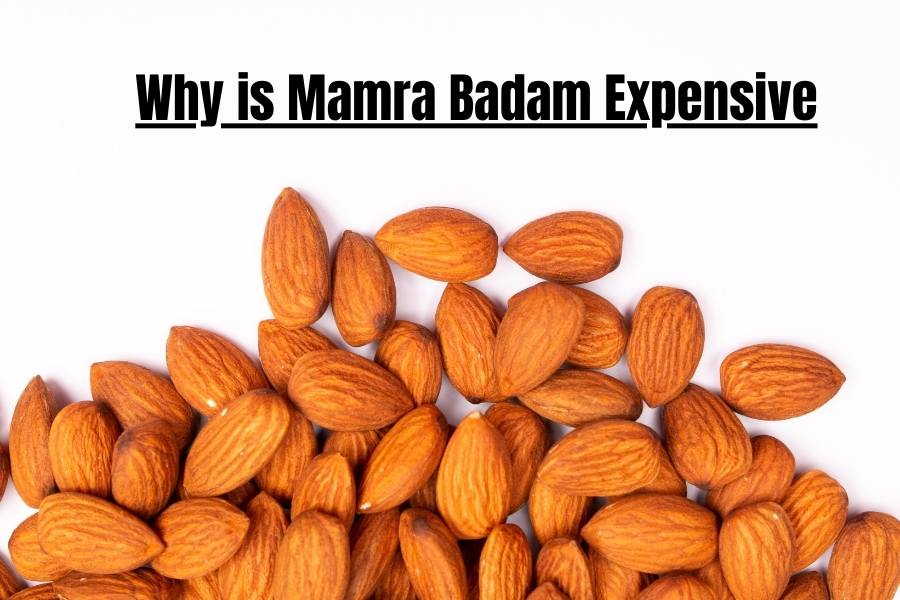
Mamra Badam, often regarded as the “king of almonds,” commands a significantly higher price in the market compared to other almond varieties. This raises the question – why is Mamra Badam so expensive? What makes it special enough to warrant such a premium price tag? The answer lies in a combination of factors, including its unique origin, labor-intensive cultivation process, nutritional value, supply-demand dynamics, and distinct characteristics that set it apart from other almonds.
If you’ve been curious about the reasons behind the high cost of Mamra almonds, this blog will take you on a comprehensive exploration. We’ll decode the factors contributing to the price of Mamra Badam and help you understand why it continues to maintain its allure despite its steep price.
Check our California Almonds
The Origin of Mamra Badam
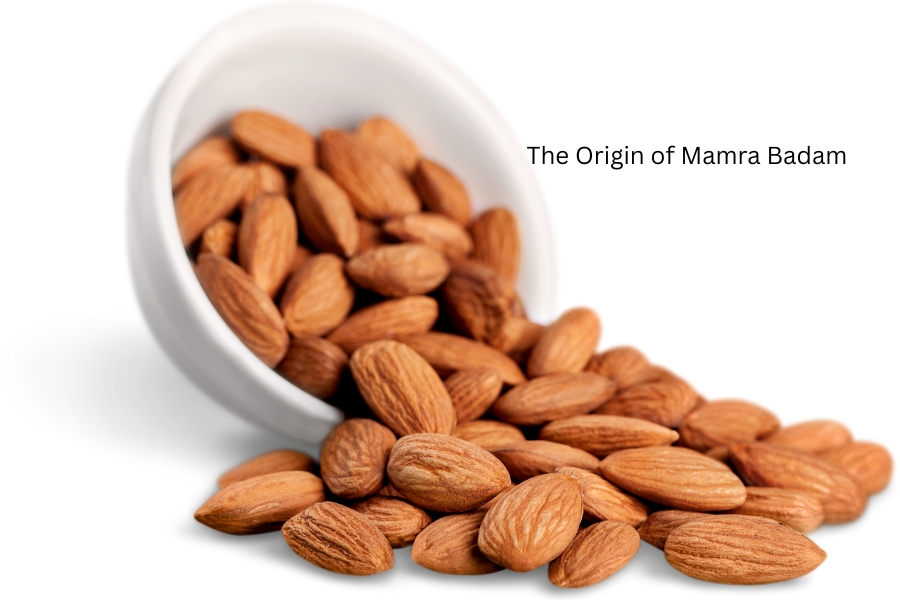
One of the primary reasons Mamra Badam is expensive is its place of origin. Mamra almonds are predominantly grown in specific regions of Iran, Afghanistan, and some parts of India, particularly Kashmir. These regions are known for their ideal climate and soil conditions, which are crucial for cultivating Mamra almonds. Unlike other commercially grown almonds that come from larger almond-producing countries like the United States (California), Mamra Badam is grown in traditional farms where production volume is relatively limited.
The regions producing Mamra almonds are characterized by a cold climate with fertile soil rich in essential minerals. This natural environment contributes to the rich flavor and nutrient profile of Mamra Badam. However, the limited geographical area available for cultivation directly impacts production levels, making it difficult to scale output. This rarity adds to the exclusivity of Mamra almonds, driving up their market price.
You may also like Afghani- Mamra- Badam
A Labor-Intensive Cultivation Process
Another significant factor behind the high cost of Mamra Badam lies in its cultivation and harvesting process. Unlike California almonds, which are grown on a large, industrial scale using mechanized farming techniques, Mamra almonds are cultivated traditionally. These farms rely on minimal machinery, placing a tremendous amount of pressure on manual labor to ensure quality.
The farming process involves intricate care and high attention to detail. Mamra trees, which thrive in mountainous regions, require precise irrigation and natural farming methods to ensure their signature quality. Key stages, from pollination to harvesting, involve traditional techniques that are time-consuming but ensure a superior product. The almonds are handpicked, and the post-harvest process, such as drying and shelling, is carried out manually.
This meticulous and labor-intensive process not only ensures the quality of the product but also significantly elevates its cost. Farmers incur higher labor costs and spend more time tending to Mamra almond crops than other faster-growing almond varieties like California almonds.
High Nutritional Value of Mamra Badam
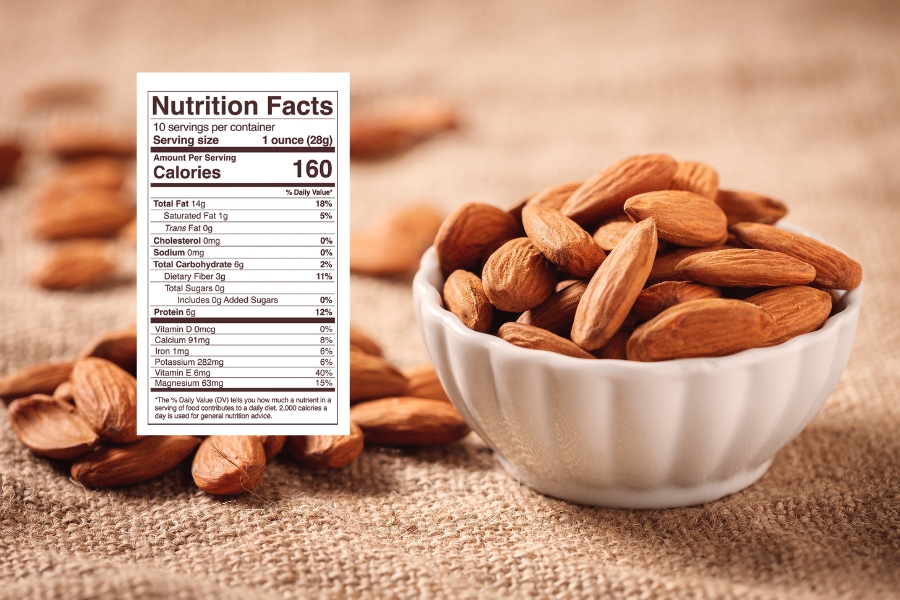
Mamra Badam is celebrated worldwide for its exceptional nutritional content, which is far superior to other almond varieties. This unique characteristic adds to its desirability and, subsequently, its price. Here’s a quick look at the nutritional profile of Mamra almonds:
- Rich in Healthy Fats: Mamra Badam contains a higher percentage of healthy fats, making them extremely energy-rich. These unsaturated fats are essential for heart health, cognitive function, and overall wellness.
- High in Protein: Compared to regular almonds, Mamra Badam is packed with more protein, making it an excellent choice for people looking to meet their daily protein requirements.
- Vitamin E Powerhouse: These almonds are brimming with Vitamin E, an antioxidant that helps combat oxidative stress and promotes skin health.
- Low in Carbohydrates: Mamra almonds have a lower carbohydrate content compared to other varieties, making them ideal for individuals on low-carb or ketogenic diets.
- Naturally Pesticide-Free: Mamra Badam is usually grown organically without the use of chemical pesticides or synthetic fertilizers, which ensures a clean, natural product.
The nutrient density makes Mamra almonds a valuable addition to the diet, and people are often willing to pay a premium for something that offers such significant health benefits.
Check It Also Iran Origin Mamra Almond
Limited Supply, Global Demand
One of the pivotal economic principles influencing the price of Mamra Badam is the basic law of supply and demand. Mamra almonds are produced in smaller quantities compared to other almonds. Factors like the limited area of cultivation, laborious farming practices, and weather challenges ensure that the supply remains relatively low.
On the other hand, there is a growing global demand for Mamra almonds due to rising consumer awareness about their high quality and nutritional benefits. These almonds are particularly popular in Middle Eastern and South Asian households, where they hold cultural and culinary importance. Additionally, health-conscious individuals across the globe, especially in developed countries, are increasingly seeking out Mamra almonds for their superior nutritional profile.
The imbalance between limited supply and high demand significantly drives up the cost of Mamra Badam in the market. This dynamic becomes more pronounced during certain times of the year, such as the festive season, further inflating prices.
Comparison with Other Almond Varieties
It’s essential to understand how Mamra Badam compares to other popular almond varieties. The stark differences help highlight why Mamra almonds are pricier:
- California Almonds: The majority of the world’s almonds are grown in California, USA. These almonds are mass-produced using mechanized farming and watered extensively through artificial irrigation systems. California almonds may have a sturdy texture and mild flavor, but they lack the natural richness and nutrient density of Mamra Badam. Because of their large-scale production and efficient farming practices, California almonds are far more affordable.
- Gurbandi Almonds: Gurbandi almonds are grown in Afghanistan and are somewhat similar to Mamra almonds in shape and nutrition. While Gurbandi almonds carry some health benefits, they are less fatty and nutrient-dense than Mamra Badam, which makes the latter a more premium product.
- Nonpareil Almonds: Nonpareil almonds, another popular variety from California, are distinguished by their thin shells and smooth texture. They are highly efficient to farm and process, making them widely available at a lower cost. Their nutritional value and flavor, however, fall short of Mamra almonds.
Overall, Mamra almonds clearly stand out in terms of health benefits, taste, and purity. Their natural farming methods and superior characteristics are a stark contrast to the industrially produced counterparts like California almonds.
Cultural and Traditional Importance

Another reason Mamra almonds are costly is their cultural value. They are considered a premium food item in many cultures and are traditionally used in special recipes, religious offerings, and celebrations. Gifting Mamra Badam is also a common practice during festive seasons and ceremonial occasions, symbolizing prosperity and health.
Their association with ancient ayurvedic and unani medicine systems also elevates their standing. Many traditional medicinal practices emphasize the benefits of consuming soaked Mamra almonds daily for better health, sharper memory, and glowing skin. This deep-rooted cultural significance only adds to their demand and price.
You may check our Combo of California & Gurbandi Almonds
The Role of Import and Export Challenges
Since Mamra almonds are predominantly imported from regions like Iran and Afghanistan, geopolitical issues, tariffs, and logistical hurdles significantly affect their market price. Import restrictions, currency fluctuations, and seasonal trade barriers create additional layers of cost.
Furthermore, maintaining the quality of Mamra almonds during transit requires specialized storage conditions to preserve their freshness and prevent spoilage. These additional steps raise the overall cost by the time the almonds reach consumers.
The Allure of Exclusivity
Last but not least, the high price of Mamra Badam is partially driven by the principle of exclusivity. Being a rare and superior product, Mamra almonds are positioned as a luxury item. Consumers are often willing to pay more for products considered exclusive, natural, and of high quality. The premium tag on Mamra almonds reinforces their image as a status symbol, further driving demand.
Additional Tips for Buying Authentic Mamra Badam
- Buy from a Trusted Supplier: Purchase Mamra Badam from a trusted and reputable supplier to ensure quality and authenticity.
- Check for Harvest Date: Ideally, almonds should be harvested in the months of September or October. Check the package label for the harvest date to ensure freshness.
- Avoid Discolored Almonds: Authentic Mamra Badam should have a light brown color with no spots or discoloration. Avoid buying almonds that appear dark or discolored as they may not be fresh.
- Pay Attention to Size and Shape: Each almond should have a similar size and shape for consistency. If you notice significant variations in size or shape, the almonds may not be of high quality.
- Storage Tips: To maintain freshness and prevent spoilage, it is important to store Mamra Badam correctly. Keep them in an airtight container in a cool, dry place away from direct sunlight. They can also be stored in the refrigerator for longer shelf life.
- Versatility of Mamra Badam: Aside from being a nutritious snack on its own, Mamra Badam can also be used in various dishes and recipes. From adding crunch to salads and cereal to making almond milk and butter, there are endless ways to incorporate these healthy nuts into your diet.
Check It Also Kashmiri Walnuts and Almonds Combo
Frequently Asked Questions
Q1. How can I identify authentic Mamra Badam?
Authentic Mamra Badam has a unique elongated shape, is lighter in weight compared to other almond varieties, and has a distinct crunchy texture. Always look for reputable sellers and check for proper labeling.
Q2. Are there any specific storage tips for Mamra Badam?
To maintain freshness, store Mamra Badam in an airtight container in a cool, dry place. Refrigeration can also help preserve their natural oils and extend shelf life.
Q3. Why is Mamra Badam more expensive than other almonds?
Mamra Badam is hand-picked and grown organically in specific regions, making its production limited and labor-intensive. This exclusivity contributes to its higher cost compared to other almonds.
Q4. Can I soak Mamra Badam before consumption?
Yes, soaking Mamra Badam overnight is recommended as it softens them, makes them easier to digest, and enhances nutrient absorption.
Conclusion
Choosing authentic Mamra Badam is crucial to fully enjoy their health benefits and unique taste. By following simple guidelines such as inspecting quality, checking labels, and purchasing from trusted suppliers, you can ensure you’re consuming the best variety of almonds. Taking these precautions not only enhances your culinary experience but also supports a healthy lifestyle.

